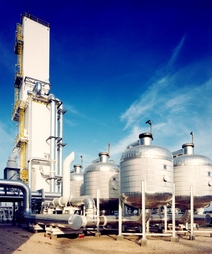International accords such as the Montreal protocol, or Kyoto accords call on all industry everywhere to monitor, control and reduce their emissions before discharging them into the environment. There are a number of different particulate and gaseous emissions which result from smoke stack emmissions in many industries including manufacturing, chemical and petrochemical, and power generation.
Areas of key measurement include:
Carbon monoxide (CO) from industrial processes and incomplete combustion of wood, oil, gas and coal.
Carbon dioxide (CO2) , Sulphur Dioxide (SO2), and Nitric oxides (NO and NO2) from combustion of gas, oil and coal.
Hydrogen sulfide (H2S) and methyl mercaptan (CH3SH) from pulp and paper mills.
Hydrocarbons resulting from incomplete combustion of fuels.
ISO 3930 requirements for vehicle exhaust emission levels for carbon monoxide (CO), carbon dioxide (CO2), hydrocarbons (HC, in terms of n-hexane), and oxygen (O2)

In all areas, a variety of environmental pure gases and calibration gas standards are required. Additionally, due to legislative, and/or legal requirements, many of these standards will need which need manufacturing to accreditation levels.